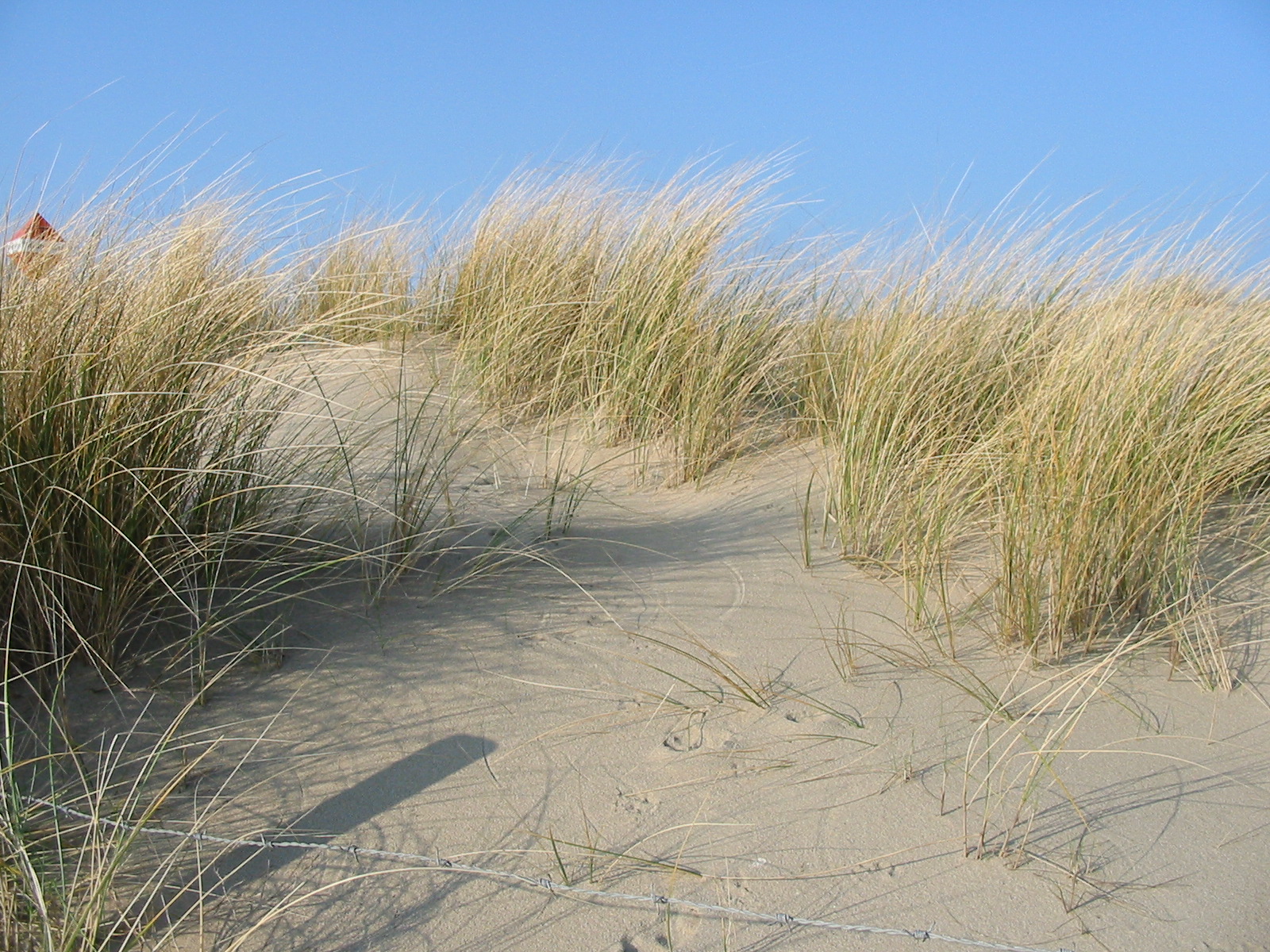Sand Dune and Sandblow Stabilization

Planning Considerations
Active sand areas may be stabilized by establishing temporary control measures, followed by tree or shrub planting within five years. In situations where trees or shrubs are not desired or practical, such as the seaface of a beach frontal dune, American beachgrass may be maintained as a long-term means of stabilization.
Methods of Stabilization
Mechanical
This is usually done with brush matting or with sand fencing. It is usually limited to small areas where beachgrass is not available for planting, or where immediate stabilization is desired.
Place brush matting (preferably coniferous) with butts to windward. Start placing on leeward side, working towards windward side. Overlap butts with tops to provide a shingling effect. Sand fencing placed at right angles to the prevailing wind will also give temporary stabilization but is expensive and more prone to vandalism.
Beachgrass
Beachgrass may be a temporary or long-term measure. American beachgrass is planted in culms. Culms should consist of two or more healthy stems, 2 to 3 feet tall. The ideal time to plant dormant beachgrass culms is in early spring, March 15 to May 1. Culms should be planted 8 to 9 inches deep. Culms may be dug anytime during the planting season. The stems should be cut back to 12 to 15 inches before or after digging. They may be stored by heeling-in, or storing at 28 to 32 degrees F.
- Culm plantings should be planted at 18 inch spacings, with center staggered in alternate rows. Five hundred to 1,000 pounds per acre of 10-5-5, or equivalent analysis, should be applied soon after planting, or in the case of a fall planting, the fertilizer should be applied early the following spring.
- An alternative, less expensive method, is to plant the beachgrass in bands. These bands should be spaced 20 to 40 feet apart. The bands should consist of at least 2 rows spaced approximately 18 inches apart, with culms approximately 18 inches apart in the rows and centers staggered in alternate rows. The closer band spacing should be used on the windward side. Fertilizer should be applied to the planted bands as indicated above.
- When beachgrass is to be used for long-term protection, it may be maintained by annual applications of 300-500 pounds per acre of a 10-5-5 fertilizer or its equivalent.
References
North Carolina Department of Environment, Health, and Natural Resources, Erosion and Sediment Control Field Manual, Raleigh, NC, February 1991.